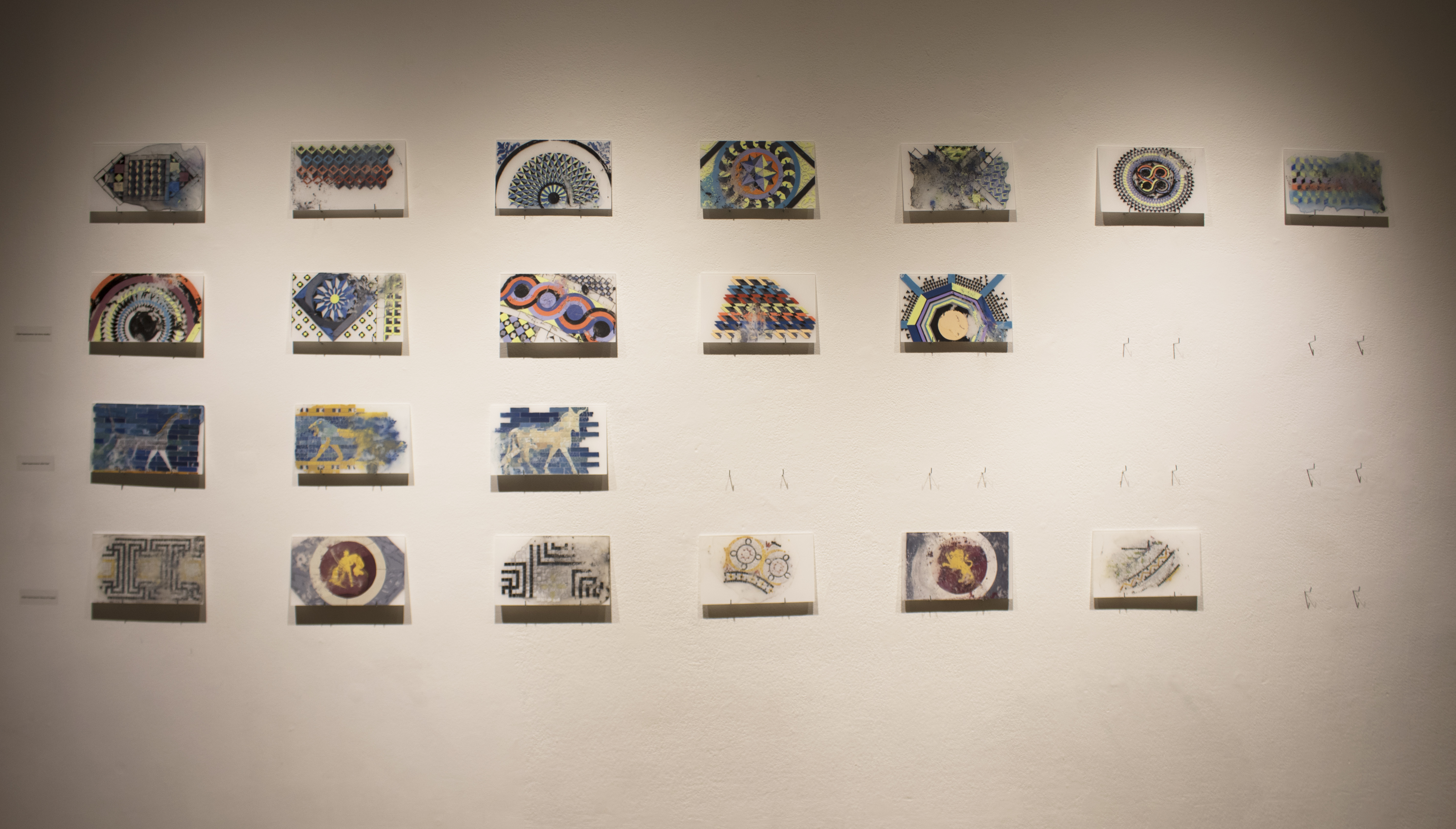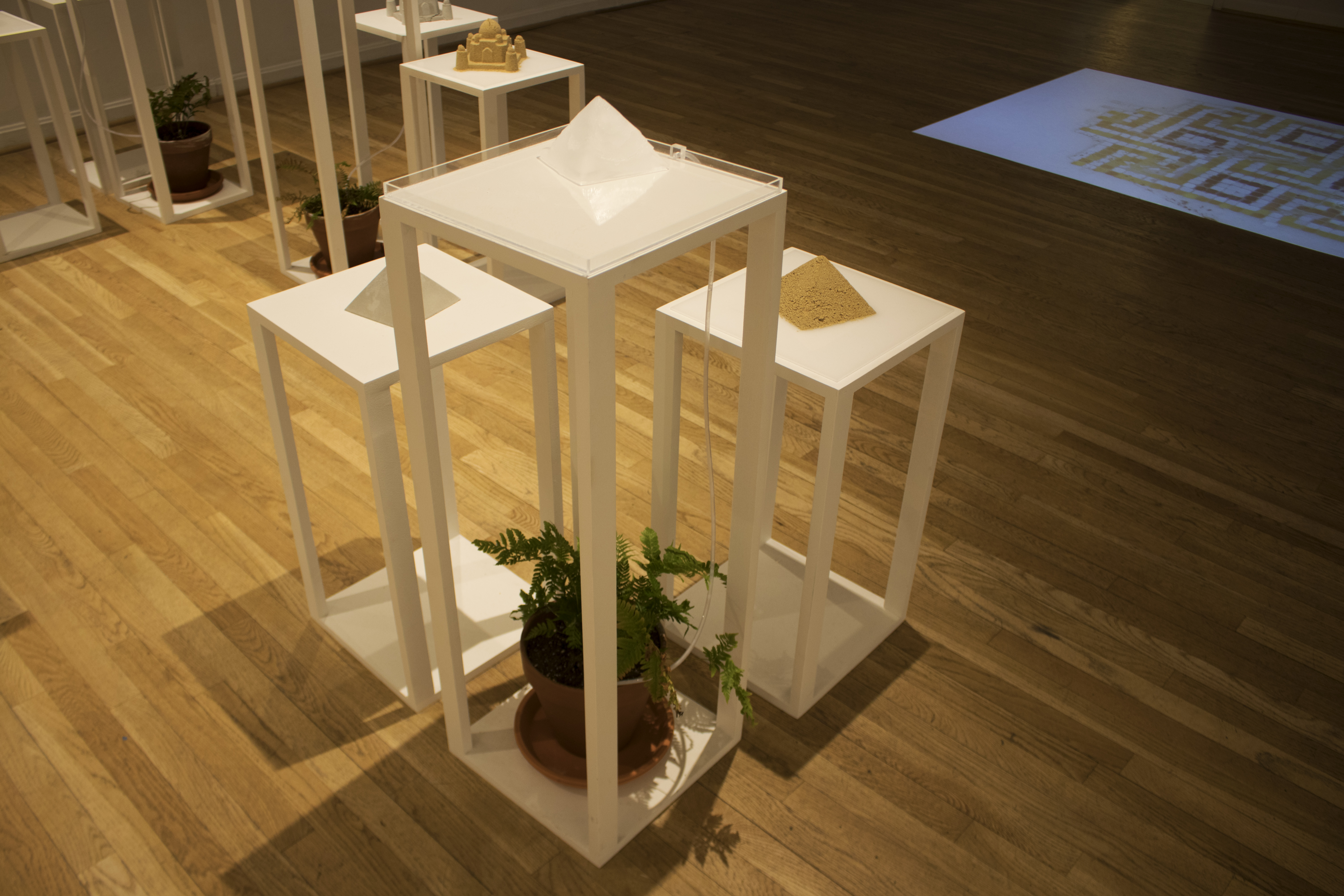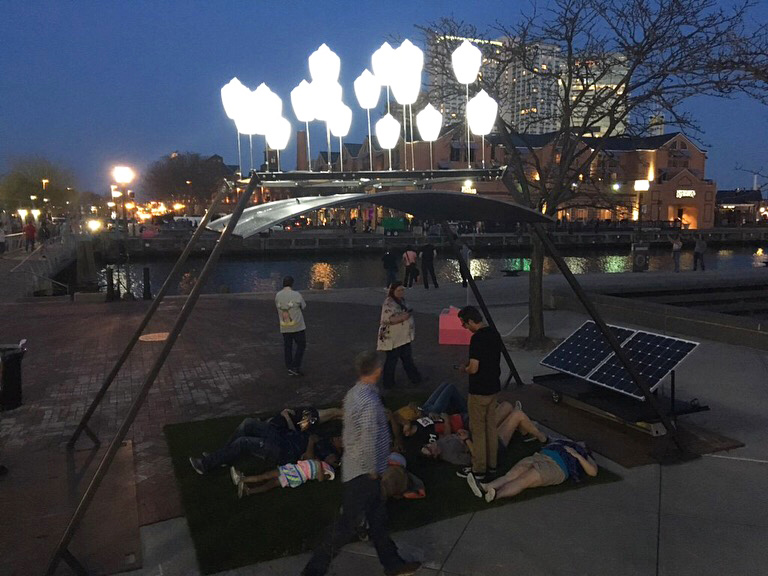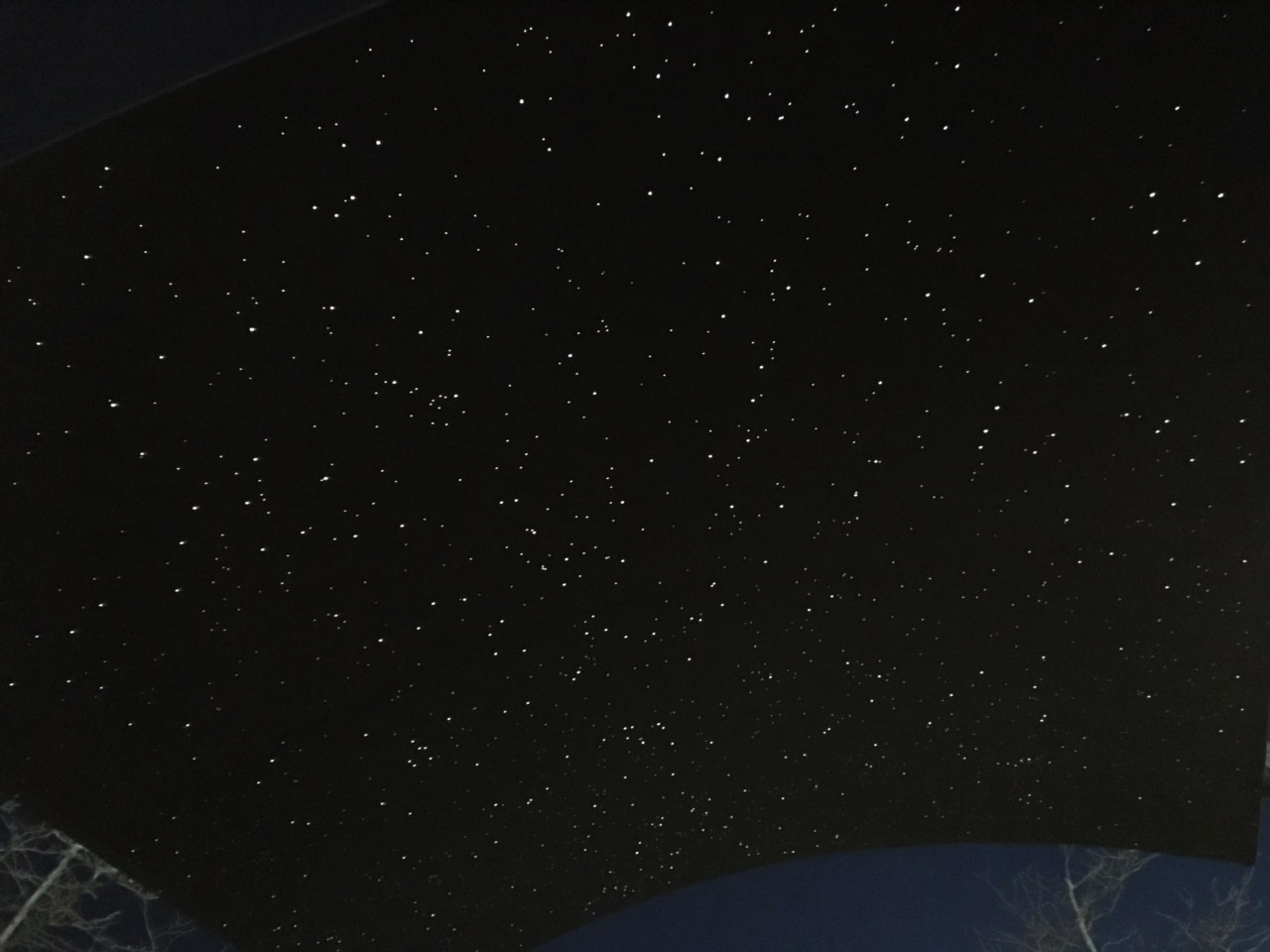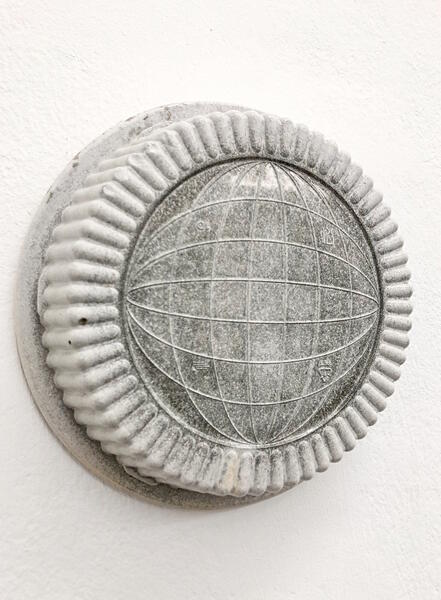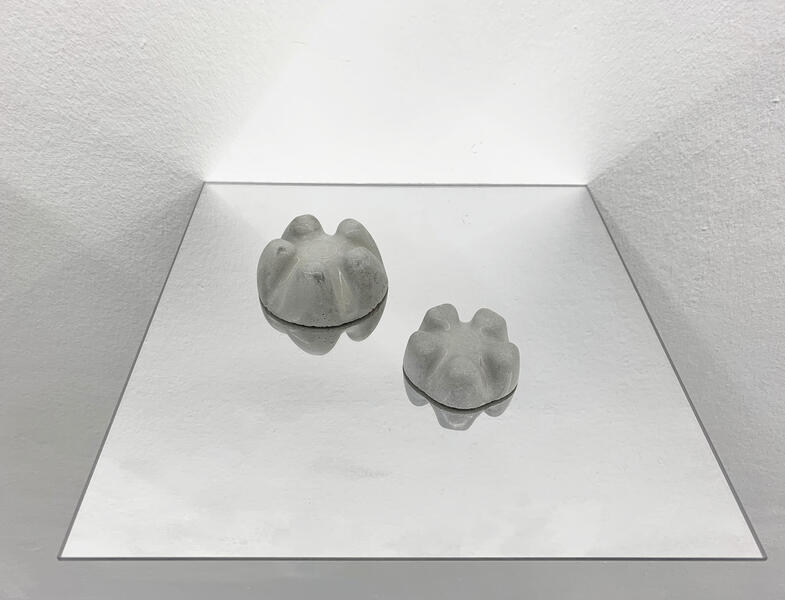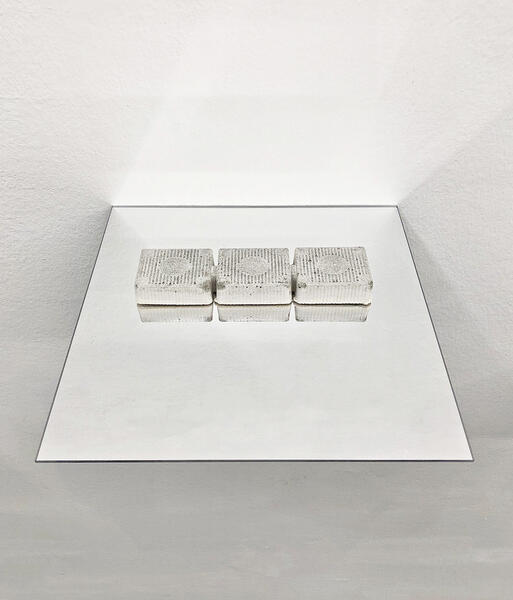Work samples
-
 Object Impermanence (installation shot)Object Impermanence is an ongoing site specific installation. When this installation is shown, a new painted tile is placed on the stand with ice on top at the beginning of each day for the duration of the exhibition. These hand painted acrylic tiles directly references tiles from an important site specific to the location of the exhibition . As the ice melts, water alters or washes away part of the painting. The tray below collects the water and the runoff from each event. A videocamera, installed above the stand displaying the painted tile and ice, records and projects a live feed of the action directly onto the exhibition space's floor at a scale approximately the size of the original site’s floor. Afterwards each tile is displayed on the wall with it’s predecessors. For the project's most recent exhibition location, Washington, DC, the tiles are based on the floor tiles of the Library of Congress. drawings on acrylic, gouache, ice, videocamera, MDF, live stream video projection on styrene, dimensions variable, 2019
Object Impermanence (installation shot)Object Impermanence is an ongoing site specific installation. When this installation is shown, a new painted tile is placed on the stand with ice on top at the beginning of each day for the duration of the exhibition. These hand painted acrylic tiles directly references tiles from an important site specific to the location of the exhibition . As the ice melts, water alters or washes away part of the painting. The tray below collects the water and the runoff from each event. A videocamera, installed above the stand displaying the painted tile and ice, records and projects a live feed of the action directly onto the exhibition space's floor at a scale approximately the size of the original site’s floor. Afterwards each tile is displayed on the wall with it’s predecessors. For the project's most recent exhibition location, Washington, DC, the tiles are based on the floor tiles of the Library of Congress. drawings on acrylic, gouache, ice, videocamera, MDF, live stream video projection on styrene, dimensions variable, 2019 -
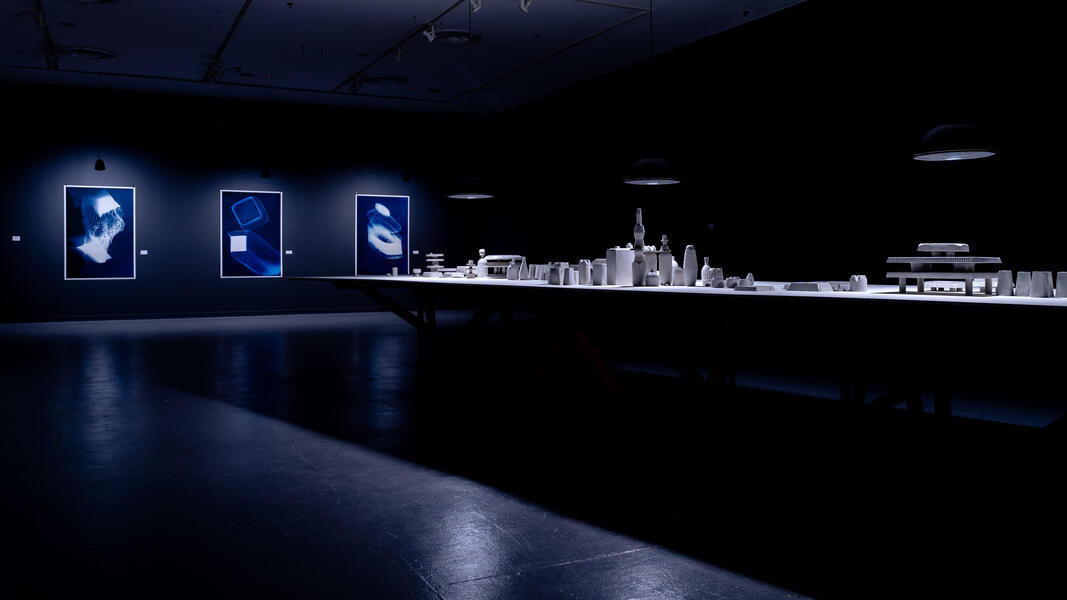 CounterweightThis exhibition,Counterweight, invites viewers to consider what is permanent. What are the artifacts we will leave behind? What happens to the lightweight, inconsequential objects we call disposable but are in fact as enduring as the things we intend to last? It is difficult to grasp the permanent nature of the temporary objects of convenience, many of which sustain our existence, but cost so little to produce that they are often given away. Once disposed of, these objects cease to exist in our minds, but they continue to exist somewhere else, somewhere out of sight. How do we reconcile their transience in our lives with their longevity in the world? This work seeks to understand these objects by transforming them, by seeing them in new terms -- perhaps in the way the rest of the natural world sees them, rather than how we do.
CounterweightThis exhibition,Counterweight, invites viewers to consider what is permanent. What are the artifacts we will leave behind? What happens to the lightweight, inconsequential objects we call disposable but are in fact as enduring as the things we intend to last? It is difficult to grasp the permanent nature of the temporary objects of convenience, many of which sustain our existence, but cost so little to produce that they are often given away. Once disposed of, these objects cease to exist in our minds, but they continue to exist somewhere else, somewhere out of sight. How do we reconcile their transience in our lives with their longevity in the world? This work seeks to understand these objects by transforming them, by seeing them in new terms -- perhaps in the way the rest of the natural world sees them, rather than how we do. -
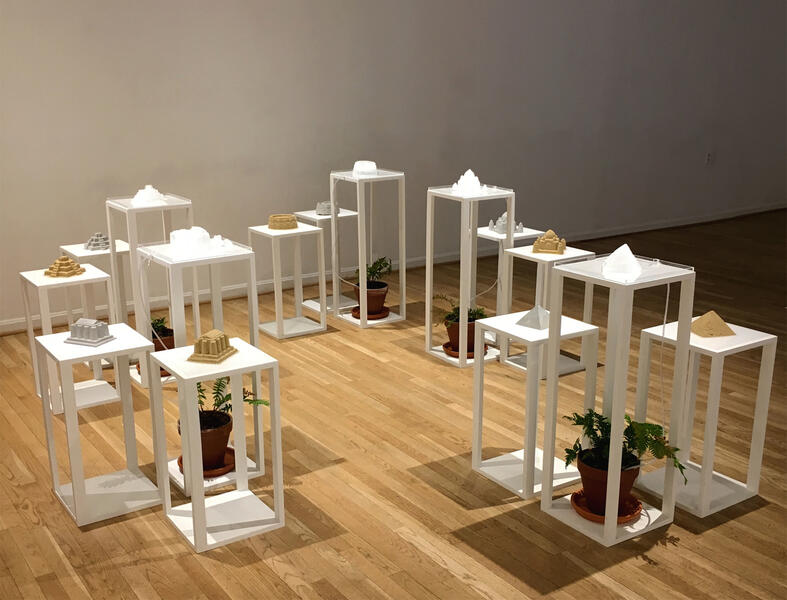 Entropic Irrigation System IIIEntropic Irrigation System III was developed to support and manage the melting ice frozen in the form of five monuments including the Taj Mahal, the Colosseum, a Mayan Temple, the Parthenon, and a Pyramid. As these ice monuments melt, the water drains through plastic tubing to water the fern growing beneath. Each monument displayed has three material versions; version one - frozen water, version 2 - sand mixed with water, version 3 - concrete (a combination of cement, sand and water). Each material is allowed to deteriorate undisturbed throughout the exhibition. The ferns selected for this system are native to the area and are able to manage flooding and prevent erosion.
Entropic Irrigation System IIIEntropic Irrigation System III was developed to support and manage the melting ice frozen in the form of five monuments including the Taj Mahal, the Colosseum, a Mayan Temple, the Parthenon, and a Pyramid. As these ice monuments melt, the water drains through plastic tubing to water the fern growing beneath. Each monument displayed has three material versions; version one - frozen water, version 2 - sand mixed with water, version 3 - concrete (a combination of cement, sand and water). Each material is allowed to deteriorate undisturbed throughout the exhibition. The ferns selected for this system are native to the area and are able to manage flooding and prevent erosion. -
 Solar Power / Solar SystemProduced as a collaborative installation with Andy Holtin, Solar Power/Solar System is a project designed to explore our view of the natural world from within our built and technology-mediated environment. Far from being a simplistic or exclusively critical view of this relationship, this project seeks to bring a piece of the natural world back into our experience through some of the same tools and technology that contribute to our distance from it. The sunlight collected by the solar panels during the day is recycled to power the LEDs which illuminate the orbs and cast light strongly onto the back of the PVC panel, which has been drilled with a pattern of small holes to replicate the actual night sky of April 14, 2018, at 9:00pm, as would be seen from Baltimore, Maryland. Each hole or star is also fitted with a small segment of fiber optic cable to transmit the light from the back to the front of the panel more completely and increase visibility and luminosity of the star field. In a city of lights and power, the Solar Power/Solar System imports the lost and subtle light of the stars, while, as a light emitting installation in a festival of light installations, it also contributes to that loss. Viewers are invited to stand, sit, or lay in the astroturf and gaze at the actual stars that would be visible if they were not hidden by our own network of lights that make city navigation possible.
Solar Power / Solar SystemProduced as a collaborative installation with Andy Holtin, Solar Power/Solar System is a project designed to explore our view of the natural world from within our built and technology-mediated environment. Far from being a simplistic or exclusively critical view of this relationship, this project seeks to bring a piece of the natural world back into our experience through some of the same tools and technology that contribute to our distance from it. The sunlight collected by the solar panels during the day is recycled to power the LEDs which illuminate the orbs and cast light strongly onto the back of the PVC panel, which has been drilled with a pattern of small holes to replicate the actual night sky of April 14, 2018, at 9:00pm, as would be seen from Baltimore, Maryland. Each hole or star is also fitted with a small segment of fiber optic cable to transmit the light from the back to the front of the panel more completely and increase visibility and luminosity of the star field. In a city of lights and power, the Solar Power/Solar System imports the lost and subtle light of the stars, while, as a light emitting installation in a festival of light installations, it also contributes to that loss. Viewers are invited to stand, sit, or lay in the astroturf and gaze at the actual stars that would be visible if they were not hidden by our own network of lights that make city navigation possible.
About Samantha
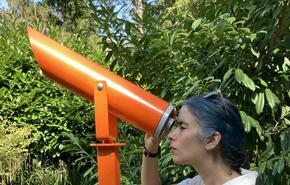
Samantha Sethi’s interdisciplinary practice embraces a blend of physical and digital objects exploring the way the world we see and move through can be modeled both visually and experientially. Through natural materials and processes, such as ice, sunlight, and sediment, Sethi creates works which are simultaneously actions and images, both the event at hand and the drawing or trace used to represent it through time. These works find their source in the artist's view of… more
Fossil Futures
-
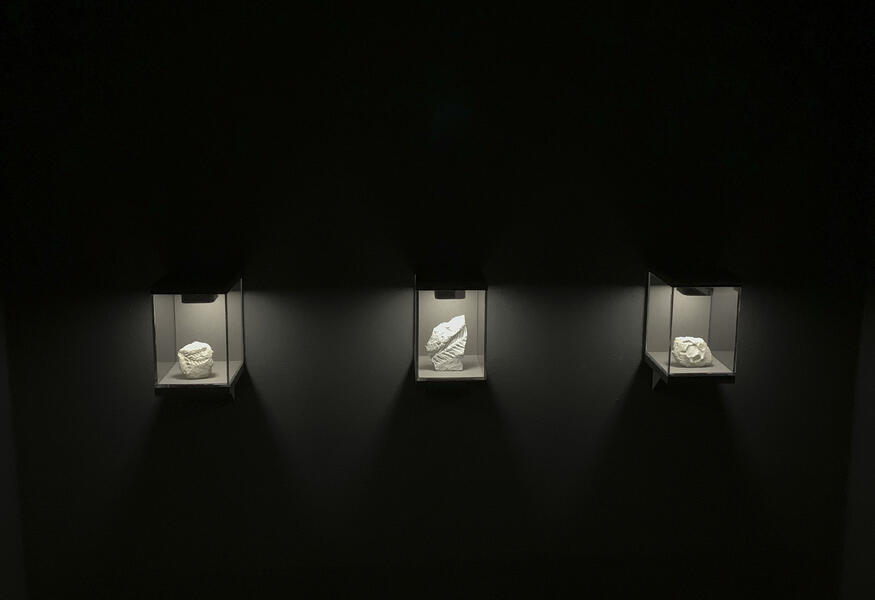 Fossil Futures Installation Shot
Fossil Futures Installation Shot -
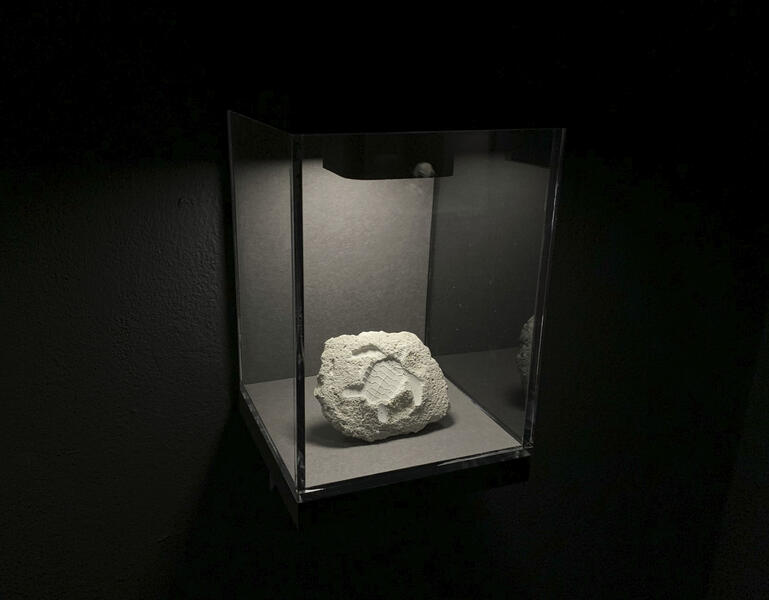 Fossil Futures: 12.2.22 005; Toy, turtlecast concrete, led, acrylic, paper, MDF
Fossil Futures: 12.2.22 005; Toy, turtlecast concrete, led, acrylic, paper, MDF -
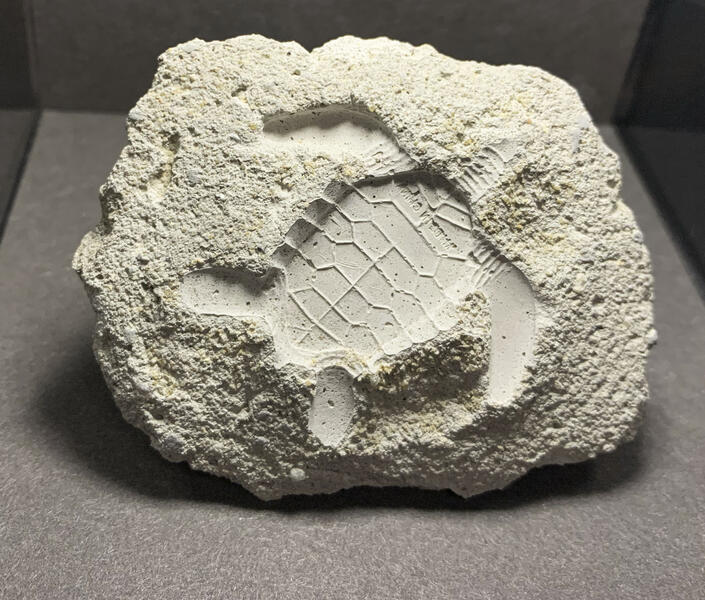 Fossil Futures: 12.2.22 005; Toy, turtle (detail)cast concrete, led, acrylic, paper, MDF
Fossil Futures: 12.2.22 005; Toy, turtle (detail)cast concrete, led, acrylic, paper, MDF -
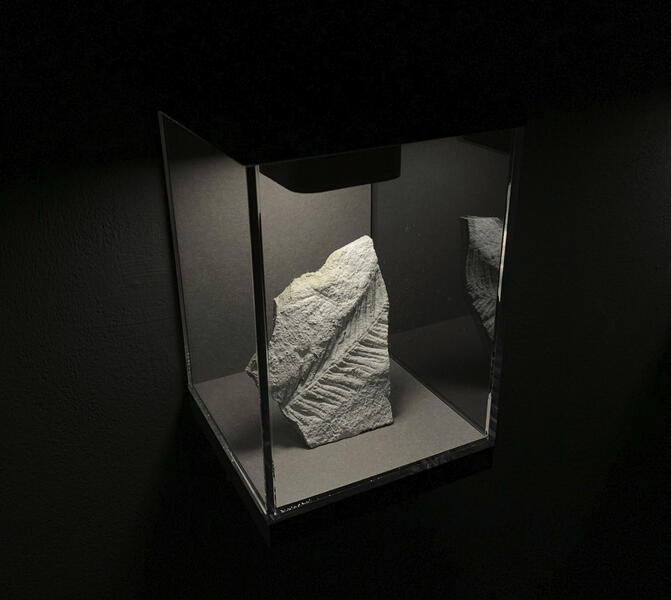 Fossil Futures: 12.2.22 Plant, plastic, ferncast concrete, led, acrylic, paper, MDF
Fossil Futures: 12.2.22 Plant, plastic, ferncast concrete, led, acrylic, paper, MDF -
 Fossil Futures: Plant, branch, gold plasticcast concrete, led, acrylic, paper, MDF
Fossil Futures: Plant, branch, gold plasticcast concrete, led, acrylic, paper, MDF
Object Impermanence
-
 Object Impermanence (detail)drawings on acrylic, gouache, ice, videocamera, MDF, live stream video projection on styrene, dimensions variable, 2019
Object Impermanence (detail)drawings on acrylic, gouache, ice, videocamera, MDF, live stream video projection on styrene, dimensions variable, 2019 -
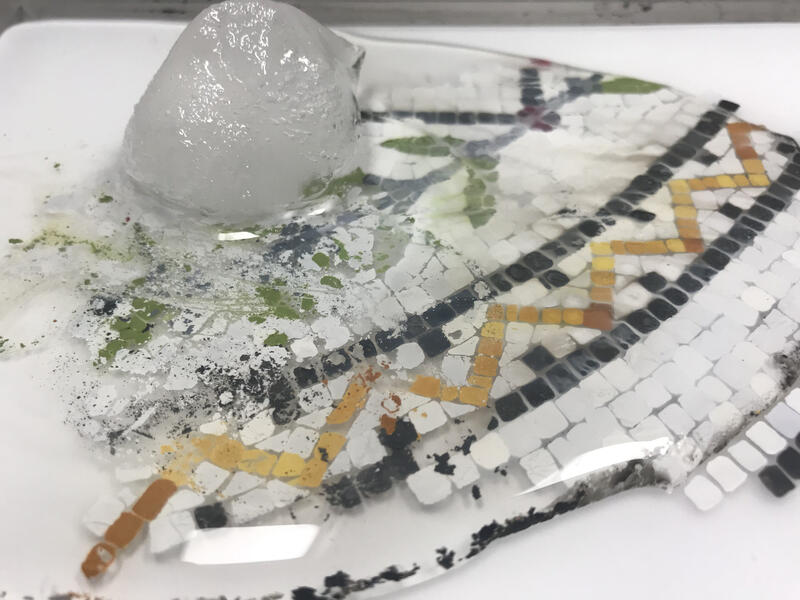 Object Impermanence (detail)drawings on acrylic, gouache, ice, videocamera, MDF, live stream video projection on styrene, dimensions variable, 2019
Object Impermanence (detail)drawings on acrylic, gouache, ice, videocamera, MDF, live stream video projection on styrene, dimensions variable, 2019 -
 Object Impermanence (tiles)drawings on acrylic, gouache, ice, videocamera, MDF, live stream video projection on styrene, dimensions variable, 2019
Object Impermanence (tiles)drawings on acrylic, gouache, ice, videocamera, MDF, live stream video projection on styrene, dimensions variable, 2019 -
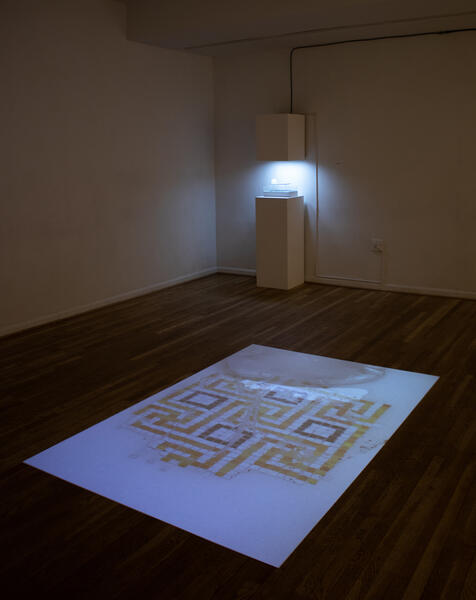 Object Impermanence (installation shot)
Object Impermanence (installation shot)
Entropic Irrigation System III
-
 Entropic Irrigation System IIIEntropic Irrigation System III was developed to support and manage the melting ice frozen in the form of five monuments including the Taj Mahal, the Colosseum, a Mayan Temple, the Parthenon, and a Pyramid. As these ice monuments melt, the water drains through plastic tubing to water the fern growing beneath. Each monument displayed has three material versions; version one - frozen water, version 2 - sand mixed with water, version 3 - concrete (a combination of cement, sand and water). Each material is allowed to deteriorate undisturbed throughout the exhibition. The ferns selected for this system are native to the area and are able to manage flooding and prevent erosion.
Entropic Irrigation System IIIEntropic Irrigation System III was developed to support and manage the melting ice frozen in the form of five monuments including the Taj Mahal, the Colosseum, a Mayan Temple, the Parthenon, and a Pyramid. As these ice monuments melt, the water drains through plastic tubing to water the fern growing beneath. Each monument displayed has three material versions; version one - frozen water, version 2 - sand mixed with water, version 3 - concrete (a combination of cement, sand and water). Each material is allowed to deteriorate undisturbed throughout the exhibition. The ferns selected for this system are native to the area and are able to manage flooding and prevent erosion. -
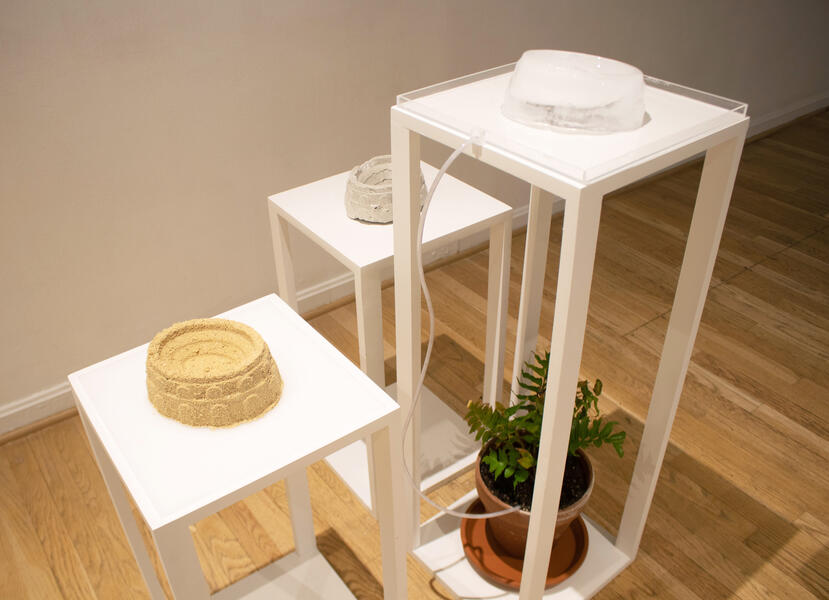 Entropic Irrigation System (Colosseum)
Entropic Irrigation System (Colosseum) -
 Entropic Irrigation System III (pyramid)
Entropic Irrigation System III (pyramid)
Counterweight
-
 CounterweightThis exhibition,Counterweight, invites viewers to consider what is permanent. What are the artifacts we will leave behind? What happens to the lightweight, inconsequential objects we call disposable but are in fact as enduring as the things we intend to last? It is difficult to grasp the permanent nature of the temporary objects of convenience, many of which sustain our existence, but cost so little to produce that they are often given away. Once disposed of, these objects cease to exist in our minds, but they continue to exist somewhere else, somewhere out of sight. How do we reconcile their transience in our lives with their longevity in the world? This work seeks to understand these objects by transforming them, by seeing them in new terms -- perhaps in the way the rest of the natural world sees them, rather than how we do.
CounterweightThis exhibition,Counterweight, invites viewers to consider what is permanent. What are the artifacts we will leave behind? What happens to the lightweight, inconsequential objects we call disposable but are in fact as enduring as the things we intend to last? It is difficult to grasp the permanent nature of the temporary objects of convenience, many of which sustain our existence, but cost so little to produce that they are often given away. Once disposed of, these objects cease to exist in our minds, but they continue to exist somewhere else, somewhere out of sight. How do we reconcile their transience in our lives with their longevity in the world? This work seeks to understand these objects by transforming them, by seeing them in new terms -- perhaps in the way the rest of the natural world sees them, rather than how we do. -
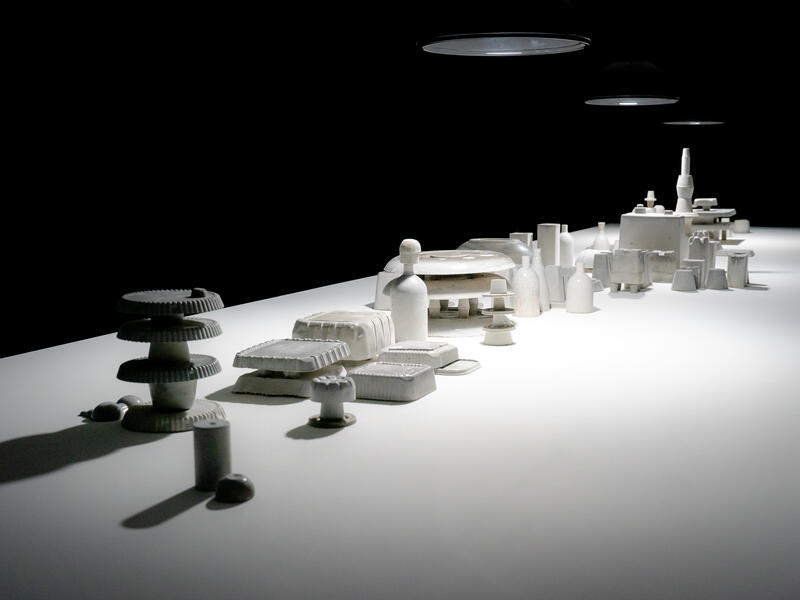 Concrete NecropolisConcrete, MDF, reclaimed lumber, dimensions variable, 2019
Concrete NecropolisConcrete, MDF, reclaimed lumber, dimensions variable, 2019 -
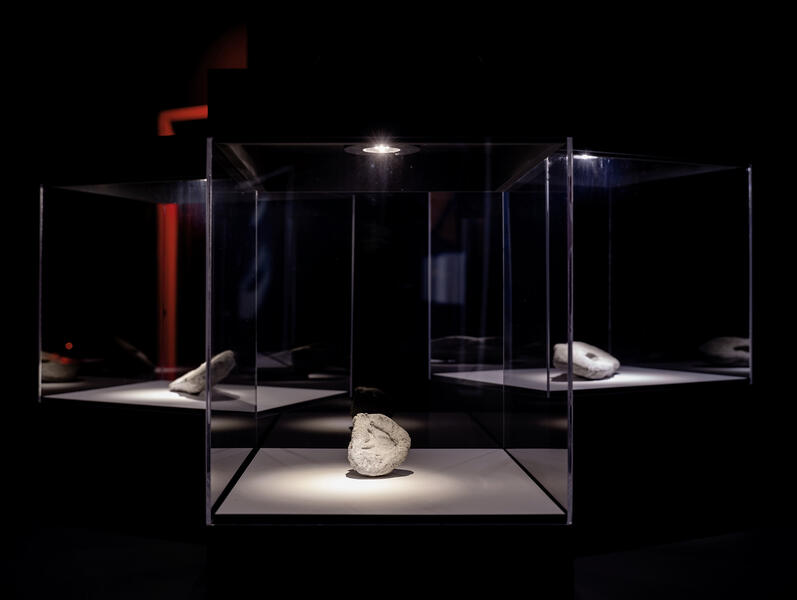 Fossil Futures: 3.12.18. 005; Pendant, fishConcrete,MDF, Acrylic, LEDs, dimensions variable, 2019
Fossil Futures: 3.12.18. 005; Pendant, fishConcrete,MDF, Acrylic, LEDs, dimensions variable, 2019 -
 Counterweight exhibitionDisposable plastic containers documented as photogram cyanotypes.
Counterweight exhibitionDisposable plastic containers documented as photogram cyanotypes.
Solar Power/ Solar System
or exclusively critical view of this relationship, this project seeks to bring a piece of the
natural world back into our experience through some of the same tools and technology
that contribute to our distance from it.
The sunlight collected by the solar panels during the day is recycled to power the LEDs which illuminate the orbs and cast light strongly onto the back of the PVC panel, which has been drilled with a pattern of small holes to replicate the actual night sky of April 14, 2018, at 9:00pm, as would be seen from Baltimore, Maryland. Each hole or star is also fitted with a small segment of fiber optic cable to transmit the light from the back to the front of the panel more completely and increase visibility and luminosity of the star field. In a city of lights and power, the Solar
Power/Solar System imports the lost and subtle light of the stars, while, as a light emitting
installation in a festival of light installations, it also contributes to that loss.
Viewers are invited to stand, sit, or lay in the astroturf and gaze at the actual stars that would be visible if they were not hidden by our own network of lights that make city navigation possible.
-
 Solar Power / Solar SystemProduced as a collaborative installation with Andy Holtin, Solar Power/Solar System is a project designed to explore our view of the natural world from within our built and technology-mediated environment. Far from being a simplistic or exclusively critical view of this relationship, this project seeks to bring a piece of the natural world back into our experience through some of the same tools and technology that contribute to our distance from it. The sunlight collected by the solar panels during the day is recycled to power the LEDs which illuminate the orbs and cast light strongly onto the back of the PVC panel, which has been drilled with a pattern of small holes to replicate the actual night sky of April 14, 2018, at 9:00pm, as would be seen from Baltimore, Maryland. Each hole or star is also fitted with a small segment of fiber optic cable to transmit the light from the back to the front of the panel more completely and increase visibility and luminosity of the star field. In a city of lights and power, the Solar Power/Solar System imports the lost and subtle light of the stars, while, as a light emitting installation in a festival of light installations, it also contributes to that loss. Viewers are invited to stand, sit, or lay in the astroturf and gaze at the actual stars that would be visible if they were not hidden by our own network of lights that make city navigation possible.
Solar Power / Solar SystemProduced as a collaborative installation with Andy Holtin, Solar Power/Solar System is a project designed to explore our view of the natural world from within our built and technology-mediated environment. Far from being a simplistic or exclusively critical view of this relationship, this project seeks to bring a piece of the natural world back into our experience through some of the same tools and technology that contribute to our distance from it. The sunlight collected by the solar panels during the day is recycled to power the LEDs which illuminate the orbs and cast light strongly onto the back of the PVC panel, which has been drilled with a pattern of small holes to replicate the actual night sky of April 14, 2018, at 9:00pm, as would be seen from Baltimore, Maryland. Each hole or star is also fitted with a small segment of fiber optic cable to transmit the light from the back to the front of the panel more completely and increase visibility and luminosity of the star field. In a city of lights and power, the Solar Power/Solar System imports the lost and subtle light of the stars, while, as a light emitting installation in a festival of light installations, it also contributes to that loss. Viewers are invited to stand, sit, or lay in the astroturf and gaze at the actual stars that would be visible if they were not hidden by our own network of lights that make city navigation possible. -
 Solar Power / Solar System (view from underneath)
Solar Power / Solar System (view from underneath) -
Solar Power / Solar System video documentationProduced as a collaborative installation with Andy Holtin, Solar Power/Solar System is a project designed to explore our view of the natural world from within our built and technology-mediated environment. Far from being a simplistic or exclusively critical view of this relationship, this project seeks to bring a piece of the natural world back into our experience through some of the same tools and technology that contribute to our distance from it. The sunlight collected by the solar panels during the day is recycled to power the LEDs which illuminate the orbs and cast light strongly onto the back of the PVC panel, which has been drilled with a pattern of small holes to replicate the actual night sky of April 14, 2018, at 9:00pm, as would be seen from Baltimore, Maryland. Each hole or star is also fitted with a small segment of fiber optic cable to transmit the light from the back to the front of the panel more completely and increase visibility and luminosity of the star field.







